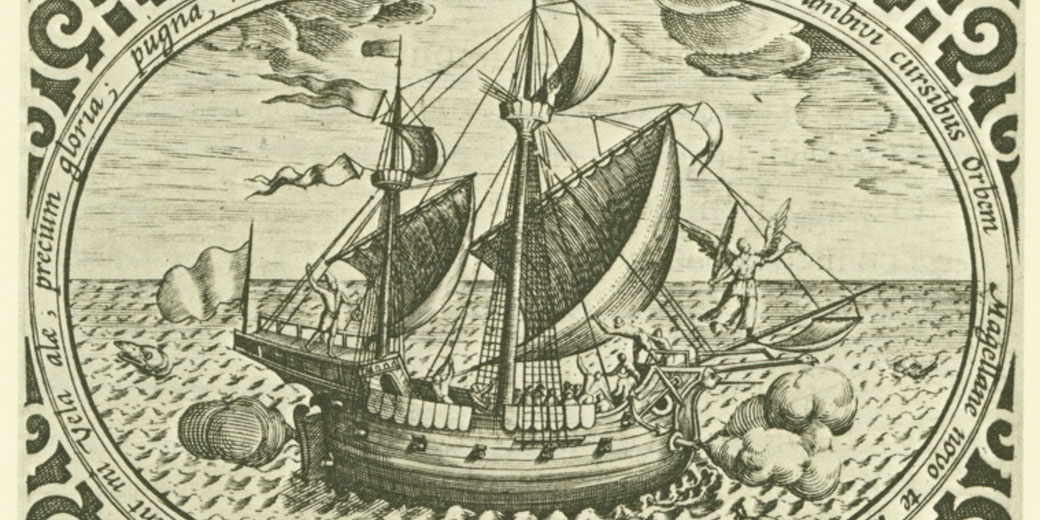Was Magellan really the first person to circumnavigate the world?

Ferdinand Magellan's name is synonymous with adventure, bravery, and the relentless pursuit of the unknown. Born into a world where the edges of the map were still being drawn, Magellan dared to envision a path that would connect the continents, forever altering our understanding of the globe.
He is often credited with being the first European to travel around the world. But how true is this claim?
Background
Born in either Sabrosa or Porto in Portugal in 1480 to a noble family, Magellan served as a page at the courts of King John II and later King Manuel I of Portugal.
As a young man, he joined the Portuguese navy and participated in various expeditions, including Francisco de Almeida's mission in 1505 to attack Muslim traders threatening Portuguese shipping routes to India.
Magellan traveled as far as modern-day Indonesia in 1506 before returning to Europe.
He fought in the naval Battle of Diu in February 1509 and engaged in further military operations in Morocco in 1513.
During the latter battle in Morocco, Magellan sustained a leg injury that left him with a permanent limp.
Eager to reach the Spice Islands in Indonesia, Magellan proposed a westward route around the southern tip of South America.
King Manuel I of Portugal, however, was unwilling to finance the voyage. Part of the reason the king refused to support Magellan's expedition was likely due to Magellan's previous disagreements with the Portuguese crown.
Eventually, Magellan gained the support of King Charles I of Spain.
The voyage
Magellan's fleet consisted of five ships: the flagship Trinidad, along with the the San Antonio, the Conception, the Victoria, and the Santiago.
They carried around 270 men and departed Spain on September 20, 1519.
The fleet headed west across the Atlantic Ocean and reached South America near present-day Rio de Janeiro, Brazil, in December.
Magellan then proceeded south along the east coast of South America in search of a passage to the Pacific Ocean.
The journey was fraught with challenges, including dwindling food and water supplies; this led to two separate mutinies in November 1519 and April 1520.
Magellan quelled both uprisings, executing ringleaders and marooning some mutineers.

On October 21, 1520, Magellan discovered a navigable passage, now known as the Strait of Magellan, which led to the Pacific Ocean.
This discovery was a significant milestone in the expedition, as it was the passage that allowed them to navigate from the Atlantic to the Pacific Ocean.
After more than two weeks, his fleet emerged on the Pacific side and sailed north along the west coast of South America before heading westward across the open ocean.
They reached Guam in March 1521, where they resupplied.
Magellan continued westward, arriving in the Philippines later that month. On the island of Cebu, he successfully converted a local chief and his tribe to Christianity.
However, his efforts to convert another tribe on Mactan Island led to a violent confrontation on April 28, 1521.
This was called the Battle of Mactan, which was a conflict with local warriors led by Lapu-Lapu, a chieftain of the island.
During the fighting, Magellan was killed.

Circumnavigation?
Under new leadership, the surviving ships and crew eventually reached the Spice Islands.
Of the original fleet, only the Victoria, commanded by Juan Sebastián Elcano, completed the circumnavigation, returning to Spain on September 6, 1522.
This accomplishment proved that the world was round and that it was possible to sail westward from Europe to reach Asia.
Although Magellan did not survive the entire journey, he played a crucial role in planning and commanding the majority of the voyage, which is why he is often credited with the first circumnavigation of the globe.
What do you need help with?
Download ready-to-use digital learning resources
Copyright © History Skills 2014-2025.
Contact via email
With the exception of links to external sites, some historical sources and extracts from specific publications, all content on this website is copyrighted by History Skills. This content may not be copied, republished or redistributed without written permission from the website creator. Please use the Contact page to obtain relevant permission.





